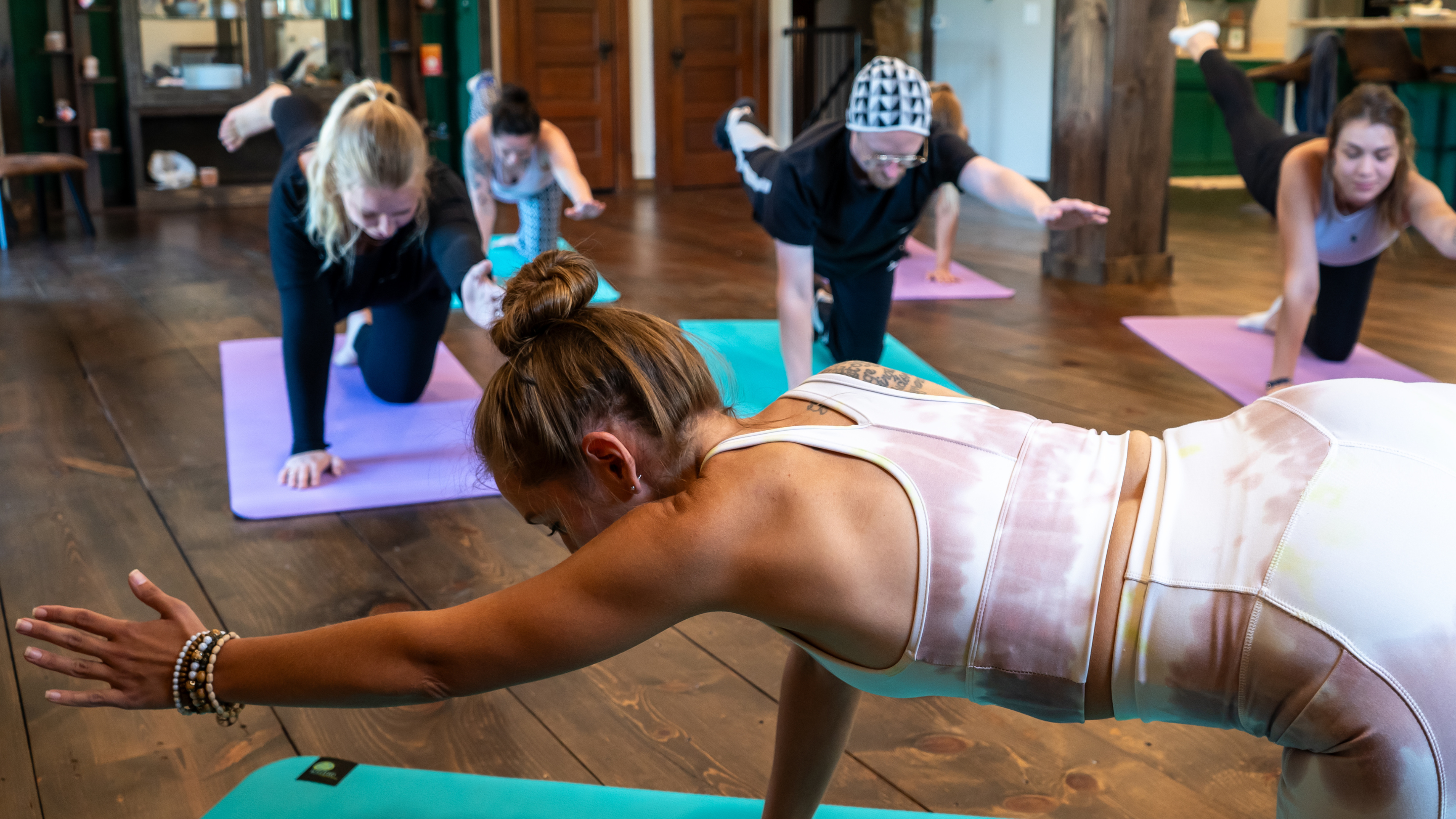Kundalini yoga is an ancient form of yoga that offers a powerful blend of breathing exercises, mantras, mudras, postures and meditation techniques designed to help awaken the energy inside each one of us. Over time, these techniques can bring physical healing, as well as emotional and spiritual transformation. Whether you are looking for greater focus or connection with yourself, through regular practice Kundalini Yoga will provide invaluable tools in enriching your life journey.
When I was first dipping my toe into yoga, I tried a Kundalini class. I had no idea what Kundalini meant; I just assumed it was another style of yoga, similar to the Hatha I had been exposed to so far. I walked into the studio, laid out my mat in the direction of the instructor, and sat down for what I thought would be a relatively run-of-the-mill yoga class. Within minutes, we were doing crazy breath exercises and, a few minutes later, there was singing. Why on God’s green Earth, I wondered, would there be singing in a yoga class?
What I had discovered was a powerful type of yoga that utilizes many different modalities to achieve spiritual enlightenment and a deep sense of connection with our highest selves. Kundalini yoga is a unique practice that looks a little different than what you might expect for a yoga class, so being informed is key. Kundalini yoga is not just for experienced yogis; it is accessible and beneficial for everyone. Read on to learn more about Kundalini yoga and its powerful benefits, as well as what to expect in a class!
What is Kundalini Yoga?
The word Kundalini means ‘coiled serpent’ in Sanskrit, and it refers to dormant energy that resides at the base of our spine. Kundalini energy is often depicted as a coiled-up snake residing just below the root chakra, moving upwards as we become enlightened through the practice of Kundalini yoga. As we practice Kundalini yoga, the snake uncoils and makes its way up through our seven chakras, balancing and nourishing them, and the aspects of ourselves they represent.
Kundalini yoga differs from more traditional forms of yoga in that it emphasizes the awakening of Kundalini energy specifically using various techniques, such as mantras (repeating sounds or words), tantra (working with energy centers), yantra (using sacred diagrams), yoga, and meditation. Through a series of breathwork, physical postures, and meditation, practitioners harness this energy and direct it through the body’s chakra system, resulting in a state of mental clarity, emotional stability, and spiritual enlightenment.
What are The Benefits of Kundalini Yoga?
In a Hatha yoga class, we connect our movements with our breath, and focus on alignment, core engagement, etc. In a Kundalini class, the focus is more on the spiritual aspect of yoga rather than the physical. Most Kundalini classes incorporate poses in some way, but they are not the main event. Kundalini yoga’s primary focus lies in elevating our spiritual connections and deepening our connection with our highest selves through the activation of Kundalini energy.
Kundalini yoga is also known as the ‘yoga of awareness’, referring to the way it helps us connect with the highest form of consciousness. For thousands of years, yogis kept Kundalini yoga a secret because of the knowledge it provided for practitioners. Regular practice cultivates inner peace and mental clarity, as well as increased creativity and heightened intuition. It also serves as a gateway to connect with our higher self, connecting us with our innate internal wisdom.
Other benefits of Kundalini yoga:
- Stress & anxiety relief
- Improves cognitive function
- Spiritual enlightenment
- Enhances mental clarity and emotional regulation
- Boost energy levels
- Release negative emotions
What to Expect in a Kundalini Class
Kundalini yoga involves a series of physical postures, breathwork, meditation, and chanting. These practices work together to awaken the Kundalini energy and balance the chakras. A Kundalini class will typically start by repeating the mantra:
“Ong Namo Guru Dev Namo”.
This translates to “I bow to the creative wisdom and to the teacher within”.
After the opening chant, a Kundalini yoga class will typically involve some kind of warm-up, followed by a kriya, or sequence of breathing exercises (pranayama), postures, hand positions (mudras), and meditation. The breathwork involves powerful breathing exercises, which help to increase oxygen levels in the body, reduce stress and anxiety and stimulate the nervous system. The class ends with a closing chant, and/or a mindfulness meditation to cultivate awareness.
Before starting Kundalini yoga, it is important to prepare both mentally and physically. This can involve setting intentions, creating a sacred space, and practicing self-care. Additionally, it can be helpful to adopt a healthy lifestyle that includes a balanced diet, regular exercise, and adequate sleep. When you are ready to start Kundalini yoga, find a qualified instructor who can guide you through the practices safely and effectively.
—
We all have the potential to connect with our highest selves, and Kundalini yoga is a powerful tool to help achieve that. Through continued practice, it is possible to awaken your inner spiritual power. Kundalini yoga will teach you beneficial postures and relaxation techniques, as well as facilitate a deeper mind-body-spirit connection. All of these aspects plus much more come together harmoniously in the practice of Kundalini Yoga.
If this sounds like something you might be interested in, you are invited to join a Kundalini class with us at SOTE Sanctuary! Check out our schedule of weekly classes, as well as our upcoming events! Thanks for reading, and we hope to see you at the Sanctuary soon!









